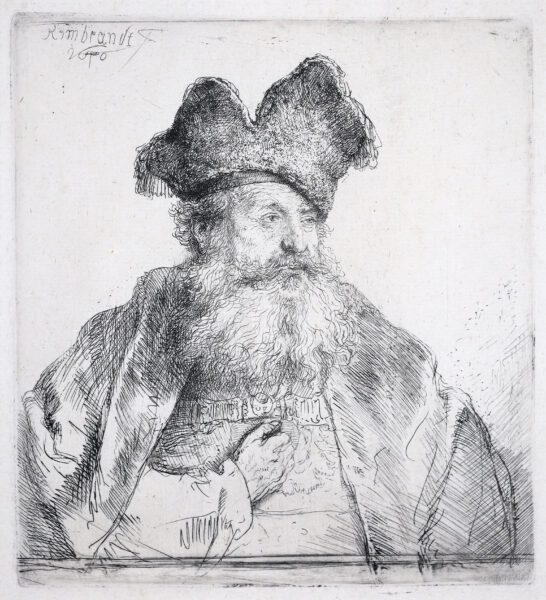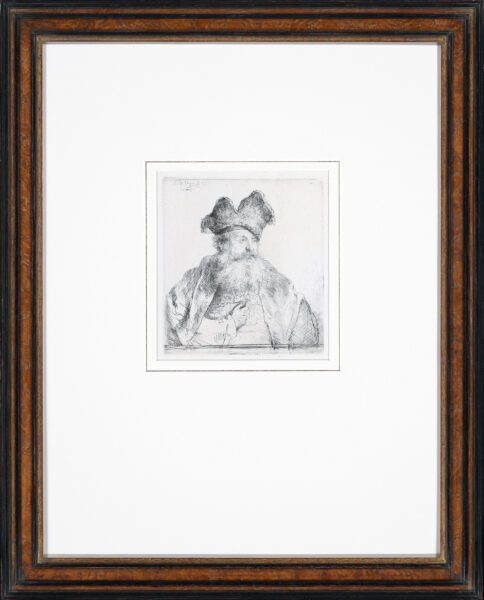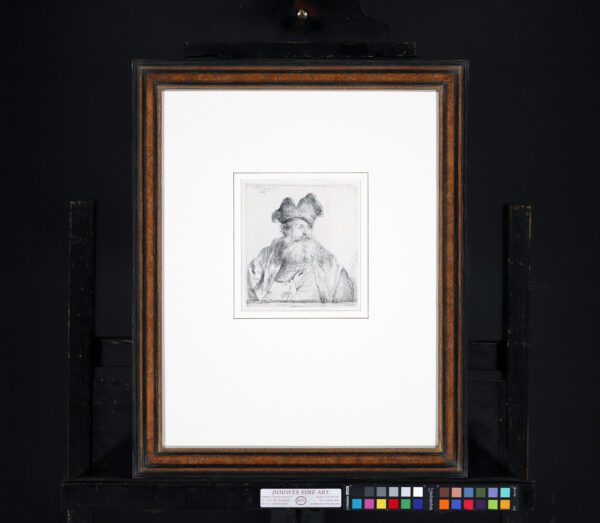“Old man with a divided fur cap”, 1640
signed and dated (u.l.): Rembrandt f. | 1640.
(the e reversed and the 4 in both directions)
etching and drypoint: 15,1 x 13,7 cm (plate) & 26,9 x 21 cm (sheet) ;
with fine margins all around.
With countermark Letters ISI (Hinterding b). (1640)
"*" indicates required fields
Notes
During his lifetime, Rembrandt’s extraordinary skills as a printmaker were the main source of his international fame. Unlike his oil paintings, prints travelled light and were relatively cheap. For this reason, they soon became very popular with collectors not only within but also beyond the borders of the Netherlands.
In the years after 1630, Rembrandt made a series of red chalk drawings of imposing old men. Some of these subjects were later used in paintings of biblical subjects or of meditating old men. This series of chalk drawings is connected with several etchings by Rembrandt. These are known as tronies, the Dutch word at the time for a face. Typically these are heads or busts only, concentrating on the facial expression, but often half-length when featured in an exotic costume. Tronies might be based on studies from life or use the features of actual sitters. Both paintings and prints of this kind were sold on the art market without identification of the sitter, and were not commissioned and retained by the sitter as portraits normally were. Rembrandt’s tronies were among his most popular and widely imitated prints.
The old man depicted here is probably the same model who sat for a number of figure studies of the same period. He looks distinguished and wealthy in his fur cap, a Polish kutschma, and cloak, belying the probably impoverished reality. Rembrandt experts have pointed out the similarity of this etching to a small red chalk drawing in the Fodor Museum in Amsterdam.
Among Rembrandt’s fantasy portraits of old men, this is one of the most fully developed. This patriarch could have stepped right from the pages of one of his beloved Bible stories. The rhetorical bearing of this exotic figure invites the question: was this image related to contemporary presentations on the stage?
A very fine impression of the first state (of two), printing with great clarity and with touches of burr on the thumb and the borderlines below, before the slipped stroke. With exceptionally wide margins around the platemark.
Literature
Bartsch 265; Hind 170;
The New Hollstein Dutch 182, First state (of II) ;
Nowell-Usticke C1: Plate not in existence
Provenance
- Christie’s, London, 2011.
- Private collection, Germany.
- Private collection, The Netherlands





